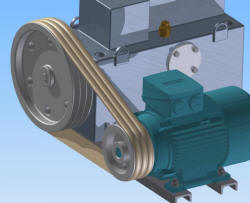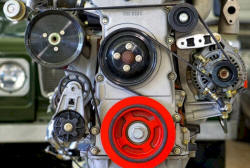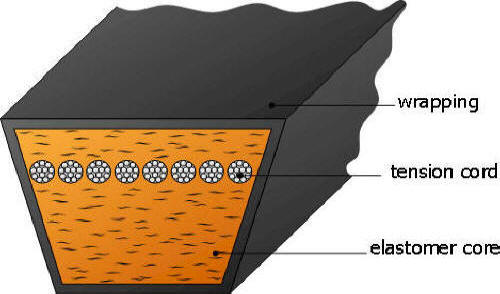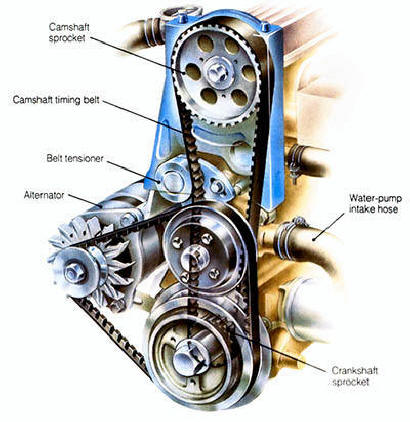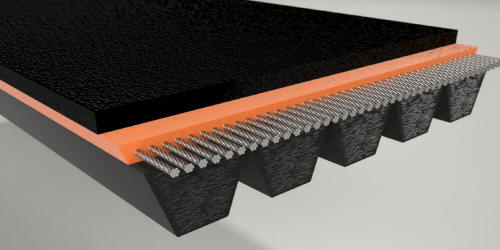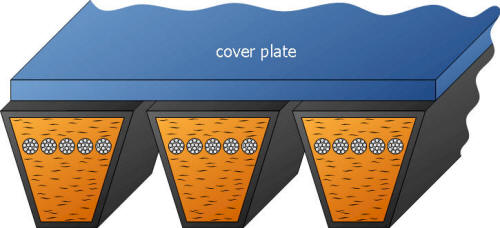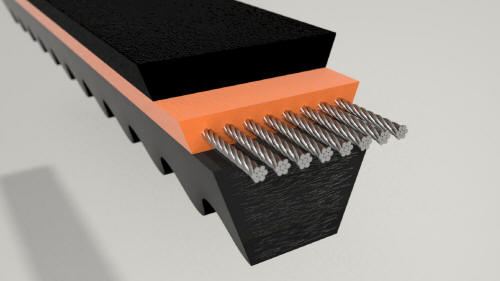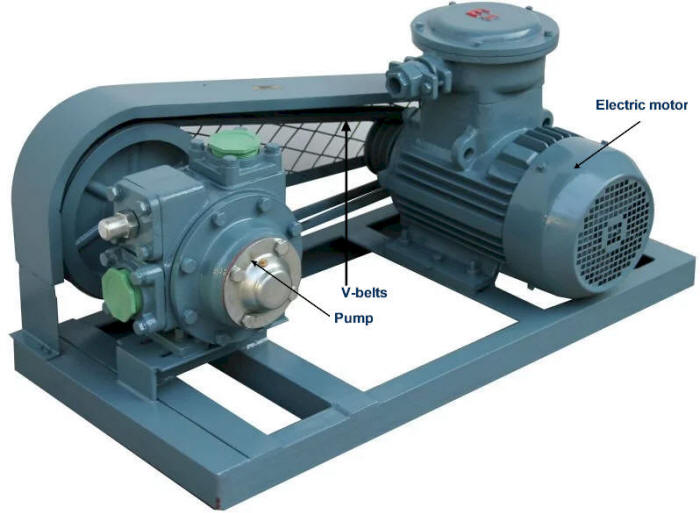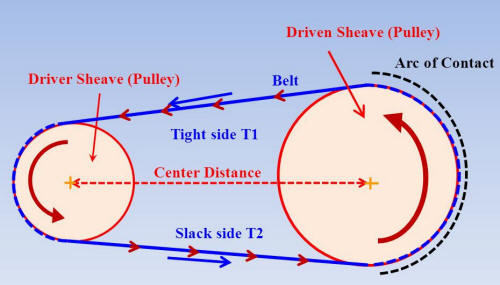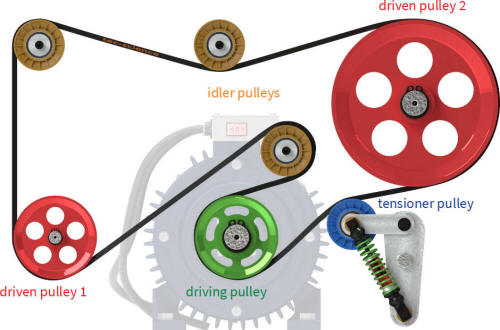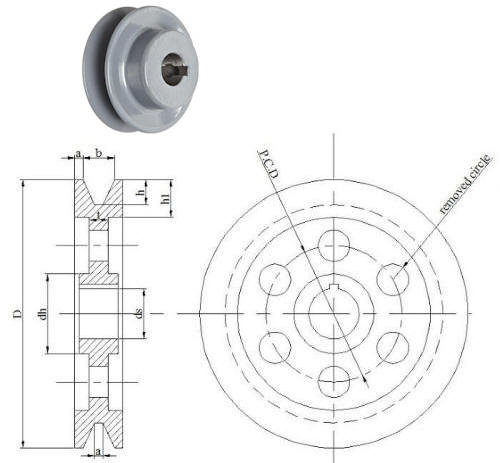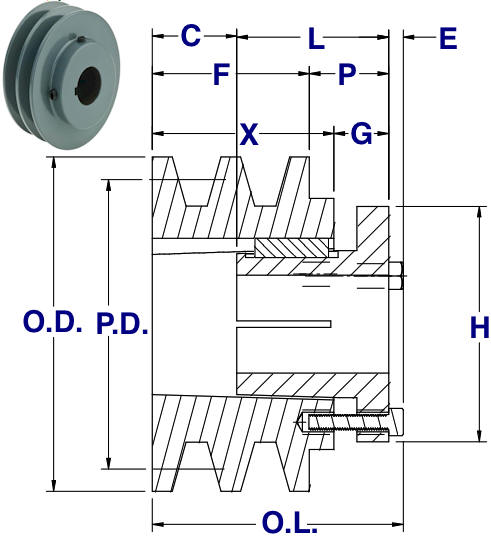|
When
rotating around the pulleys, the belt is exposed to
different loads. The section of the belt in which the
belt is strongly pulled towards the driving pulley and
is thus exposed to a large tensile load is referred to
as the tight side. On the opposite section, the belt
moves away from the driving pulley and is slightly
relieved by its “pushing” effect. This belt section is
called slack side.
Tight side
-
The section of the belt in which the belt is strongly
pulled towards the driving pulley and is thus exposed to
a large tensile load is referred to as the tight side.
On the opposite section, the belt moves away from the
driving pulley and is slightly relieved by its “pushing”
effect.
Slack
side - The slack side is the side where tension on a
belt is low compared to the other side. In a flat belt
drive, driver pulley pulls the belt through the bottom
side and deliver it on the opposite side (upper side),
so the top side is always loose. One of the reasons for
doing so is to increase the angle of contact
Tension ration - The tension in the ratio between
the tight side T1 and the slack side T2.
Tension
ratio = T1/T2 (Newton)
Angle
of contact (wrap) - In the following, a single-stage
belt drive with two pulleys that are wrapped around by a
common belt is considered. The magnitude of this wrap is
described by the wrap angle
The
larger the wrap angle, the more adhesive surface the
belt has and the greater the frictional force or the
force that can be transmitted. However, it must be noted
that the pulleys of a belt drive are wrapped to
different degrees by the belt if the pulleys have
different diameters!
The maximum transmittable force is usually limited by
the smaller of the two pulleys (usually the driving
pulley), as this pulley has a smaller wrap angle
compared to the larger driven pulley. In addition, the
greater curvature causes greater bending stresses in the
belt, which also limit the transmittable belt force.
So called idler pulleys can be used to increase the wrap
angle. These are usually placed near the actual pulleys
to achieve the greatest possible wrapping effect. If
these pulleys are used to tension the belt at the same
time, they are also called tensioner pulleys.
Jockey
(idler) pulleys- If such pulleys are merely used to
deflect the belt, then these are generally referred to
as idler pulleys. Idler pulleys are used, for example,
in multiple drives in which one driving pulley drives
several other pulleys. Idler pulleys can also be used
for long belt lengths to reduce belt vibrations. Such
pulleys can also take over the function of a guide at
the same time, so that the belt does not jump off the
pulley. Such pulleys are called guiding pulleys or guide
rollers. Guiding pulleys often have protrusions (called
flanged pulleys) on the left and right, between which
the belt is held in track.
Tension
pulleys do not yet have a tensioning effect; certain
devices are required to achieve a tensioning effect
(also known as tensioning systems). Tensioning devices
are available in a wide variety of designs. The
tensioning systems shown in the figures above were each
designed with a simple spring mechanism. The springs
offer the advantage that the belt tension can adapt
dynamically to the operating state, e.g. strong load
changes. |
